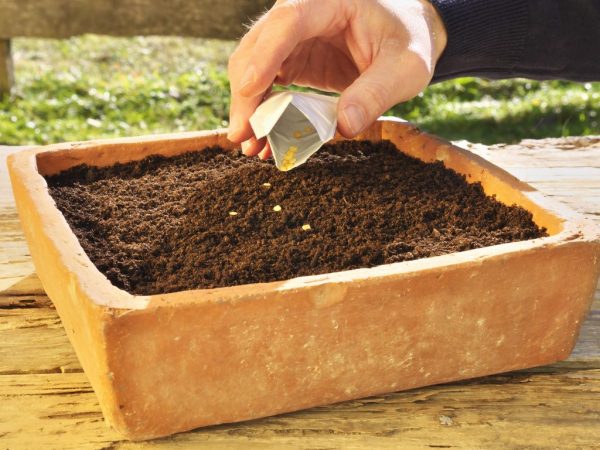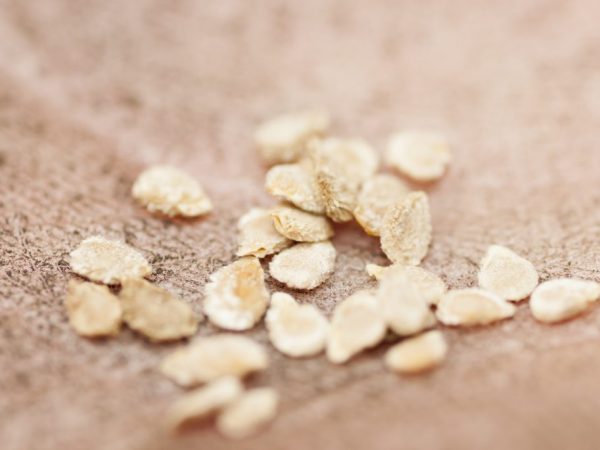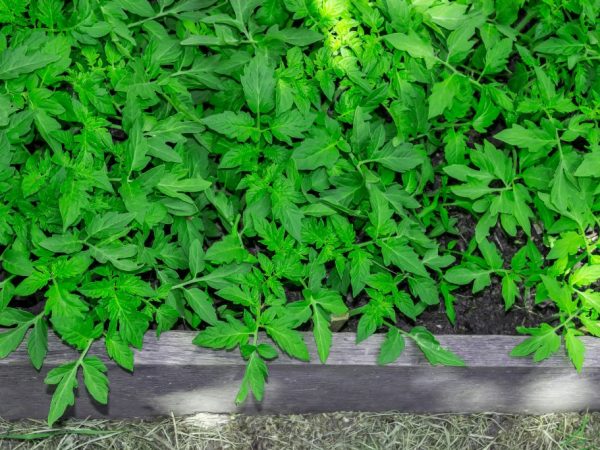Planting rules for tomatoes in March 2019
The lunar calendar helps gardeners to build a work plan on the site. Planting tomatoes in March 2019 should take place on certain days. If these dates are followed, the harvest will be solid.

Planting rules for tomatoes in March 2019
Landing in March
It is believed that it is possible to plant tomatoes for seedlings as early as March. Reasons for early sowing:
- the plants will have time to gain the desired weight and give a harvest on a warm day;
- low spring temperature will not allow the shoots to dry out;
There are also negative sides:
due to a lack of sunlight, the culture may outgrow, and the fruits will be small; At the beginning of March, the duration of daylight hours for a tomato is still insufficient (optimal - 12 hours), therefore, additional illumination with fluorescent lamps is imperative.
- the plant's resistance to various diseases decreases.
Not the last place is occupied by the complexity of caring for an early plant, the need to grow it in a warm place and do not forget to transplant it correctly (with laying part of the stem in the soil) and tie it up.
The timing of planting is rather difficult. But if you are guided by the lunar calendar, you can determine the most suitable days for this procedure - then the harvest will be successful.
Auspicious days
A suitable period for planting seeds is in the second half of March, but if the frosts have not yet gone, work should be postponed for about 2 weeks.
The growing moon, its first and third phases, are optimally suited for sowing crops that produce aboveground crops. In 2019, March 6 will be a new moon, so the following days are used for planting.
Most favorable days:
- sowing is advised to start from 7-10 to 16 - the culture will grow solid and hardy, and the harvest will be plentiful.
- the 7th, 14th, 16th, 19th are considered especially successful.
If for some reason you did not have time to carry out the planting work, try to do it later, bypassing the full moon and new moon.
For reference: in March, the Moon will be full on the 21st.
Bad days
After a new and full moon, 2 more days will be unsuccessful: at this time it is not supposed to plant and dive tomatoes, it is better to do weeding.
Plants transplanted during this period will show themselves weak, painful, and struggling.
- Unsuitable days for work in 2019: March 3, 5, 31;
- It is impossible to sow and dive seedlings on March 12 and 28.
Regional features

Sowing dates depend on climatic conditions
Each region has its own climatic conditions, which play an important role in agricultural work. Based on this, the sowing time can vary significantly.
- In the central region (focusing on Moscow, St. Petersburg, Kursk), the climate contributes to the beginning of garden work in the open field from late spring to June 10, and tomatoes dive into the greenhouse in April – May.
- From the beginning of March to April - the time of work in the Middle zone and the Moscow region.This is the best period for seedlings to grow up (so they will not outgrow until the moment of transplantation).
- In the Northwestern District, seeds are planted around March 15th. The seedlings will be ready for picking by early summer. The first flowers open on the plants, and on the street there is good weather, without the threat of frost.
- In Siberia and the Urals, early varieties are sown at the end of winter, and late ones - in January and February. Mid-season varieties - in early March.
Tatiana Orlova (Candidate of Agricultural Sciences):
In the southern regions of Russia, for growing seedlings in greenhouses, tomatoes are sown in late January-early February. For open ground - early to mid-March.
Varietal preferences
The sowing time depends on the variety of tomatoes. For each variety, the time from seed hatching to full ripening may differ.
To get a good harvest, you need to do everything on time.
On the package with seeds, the manufacturer indicates the ripening period (it is considered from the emergence of seedlings to the collection of fruits). For early ripening - about 80-100 days, mid-ripening - 110-120 days and late-ripening - up to 140 days.
| Variety | Landing dates |
| Early | March 7-13 |
| Mid-season | March 13-25 |
| Late ripening | End of winter |
| Tall | Mid February - early spring |
| Small (Cherry) | Early April |
What days to take care of
The phases of the moon affect the vegetation of plants, incl. tomatoes. The calendar also gives instructions for the care of young shoots.
- Full moon: destroy weeds and pests, weed plants and resist pests.
- On the new moon, it is better to postpone any gardening activities.
- On the growing moon - to carry out loosening and planting.
The table shows favorable days for leaving.
| Care work | March |
| Picking | 7, 10, 12, 14, 16, 19, 21 |
| Watering, weeding, loosening | 1-6, 8-13, 15, 17-20, 25 |
| Top dressing | 6, 15, 20 |

Seedlings need good care
The transplant is carried out 30-40 days after sowing the seeds, when the seedlings will release full-fledged leaves. Auspicious time is the period of the growing phase in the constellations Taurus and Pisces. When it begins to decrease under the sign of Scorpio, Capricorn and Sagittarius, the sprouts cannot be disturbed, otherwise they may get sick or die.
Before and after picking, plants need constant watering and fertilization. 10 days after transplanting, the seedlings must be fed. Re-fertilize after 2 weeks.
Inorganic fertilizers are applied during the full and waxing moon. On a decreasing one, you need to start pruning, feeding and watering. During your stay in the constellations of Pisces and Cancer, watering is not recommended, because it can kill plants.
The timing of planting early varieties in the greenhouse
Early tomatoes will bring the first harvest within 3 months after sprouting.
Sowing is planned for the greenhouse from the beginning of March. The best time depends on the region and climate.
If the greenhouse is heated and lit, vegetables can sprout even in winter. It is important that the soil is heated to 14 ℃ at a depth of about 15 cm.
Greenhouses made of plastic (polycarbonate) are of better quality, they are easier to heat, and they keep heat much better than plastic greenhouses.
Unheated greenhouses
Approximate planting dates in cold plastic greenhouses:
- regions with a mild climate: mid to late April.
- middle band: late April-early May.
- Ural: early-mid-May.
- Siberia: mid to late May.
Heated greenhouses
Heated greenhouses allow you to start planting 2-3 weeks earlier.
Approximate dates of planting works:
- in the middle lane - the end of April;
- in the Urals - May 5-10, but during frosts, plants need to be additionally covered with a film;
- in Siberia - May 20-25.
Dates of landing in open ground
If the seeds are seeds directly into the soil, such a harvest can be expected for a long time, therefore, seedlings dive into the unprotected soil after it reaches 2 months of age.
Period
In regions with sufficient sunshine, seed of late varieties can be grown, but transplantation to the site should take place from 11 to 25 April 2019.
Planting work should be undertaken only after the end of the frost.At the time of planting, the air must be warmed up at least 12 ℃, and the seedlings must reach the required level of development. Do not plant tomatoes during showers or when the air temperature drops below 18 ℃. Usually planted in the evening, but in cloudy weather, morning work is also allowed.
Inhabitants of the southern territories of Russia, it is advisable to plant early maturing varieties from mid-April to early May. The central regions devote the first 2 weeks of May to early maturing species. The periods under the constellations of Libra, Capricorn, Pisces, Cancer, Taurus, Scorpio have an advantage.
Care
The seedlings planted in the ground are covered with a piece of polyethylene film through which light penetrates, or other material for shelter, since in April-May the weather is unstable and a cold snap may occur.
Tatiana Orlova (Candidate of Agricultural Sciences):
The film is removed only in June, when the likelihood of a sharp drop in temperature disappears.
The best material for a shelter at the present time is not a film, but a non-woven material, for example Lutrasil, Agrospan. Such a shelter is light (lighter than plastic wrap), but at the same time protects the seedlings from low temperatures, wind, and slightly shades them from the sun during rooting. But at the same time, the non-woven material is "breathable", under which the seedlings will not be worn out.




